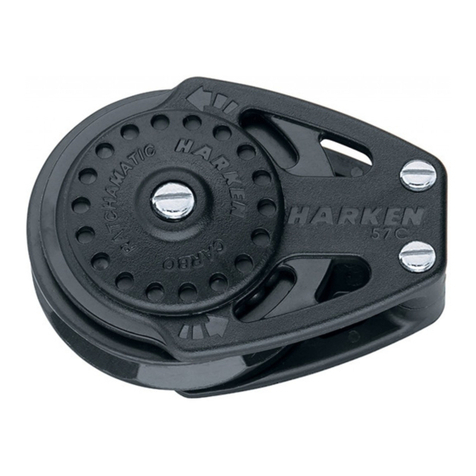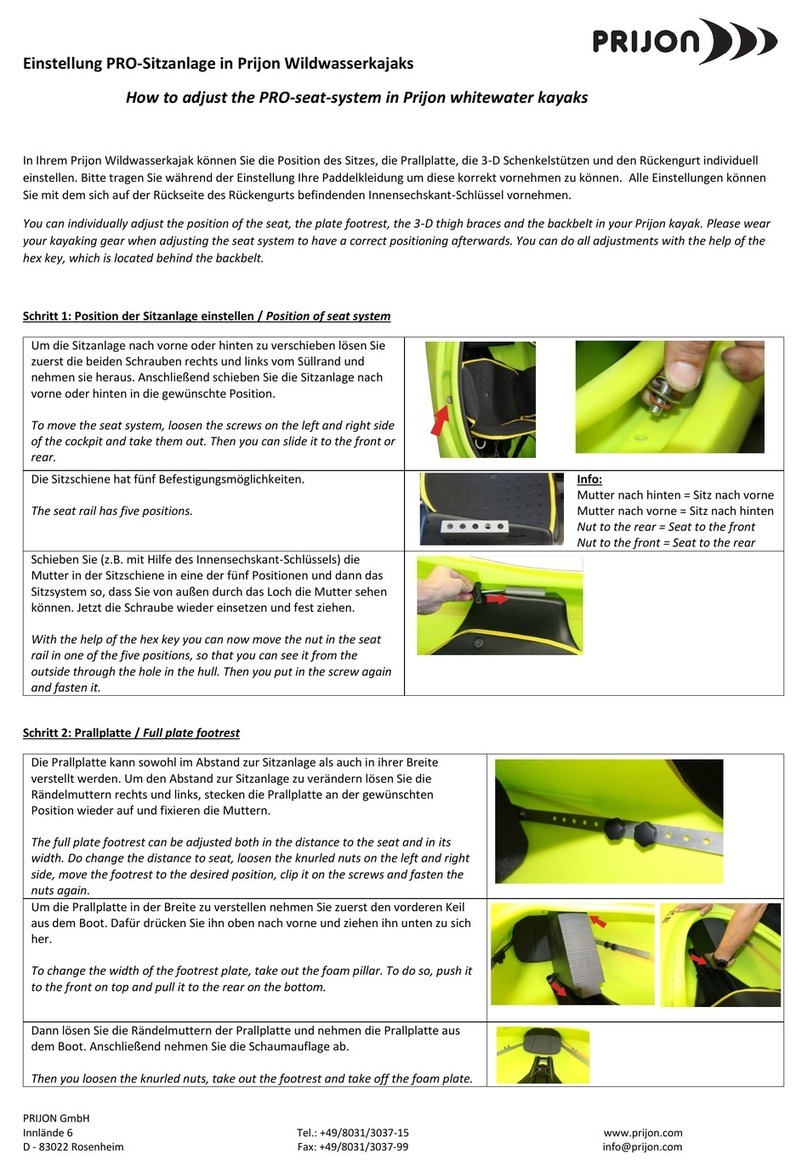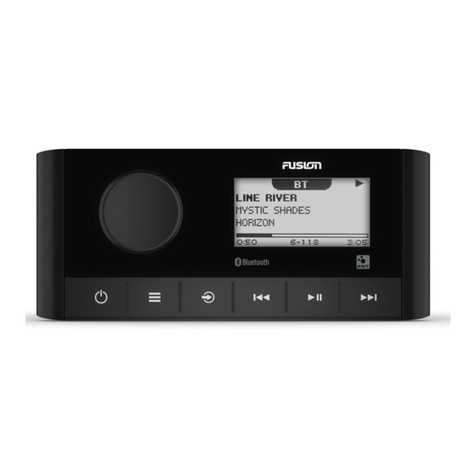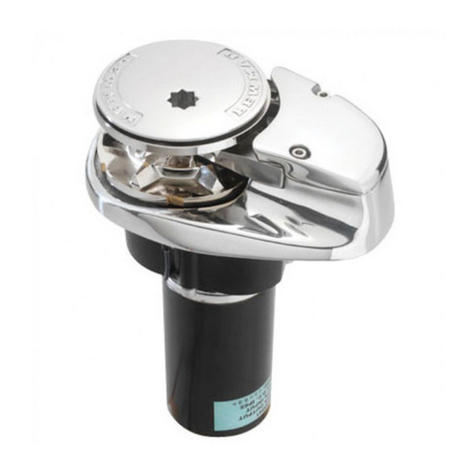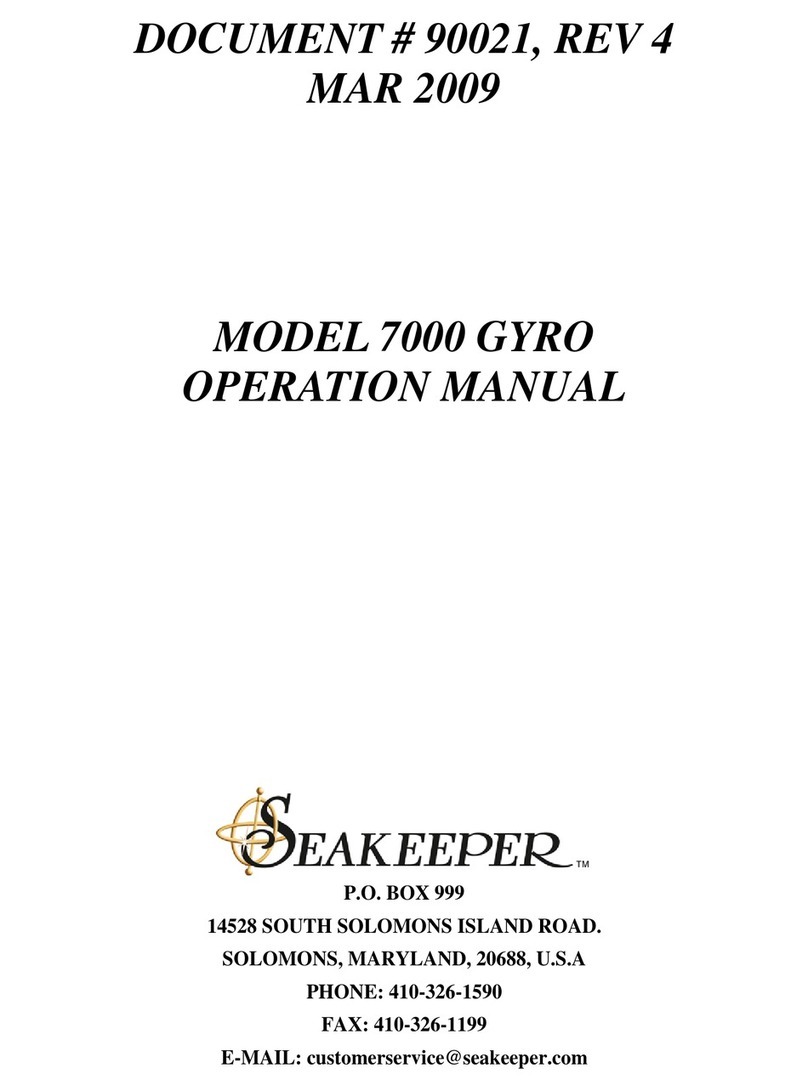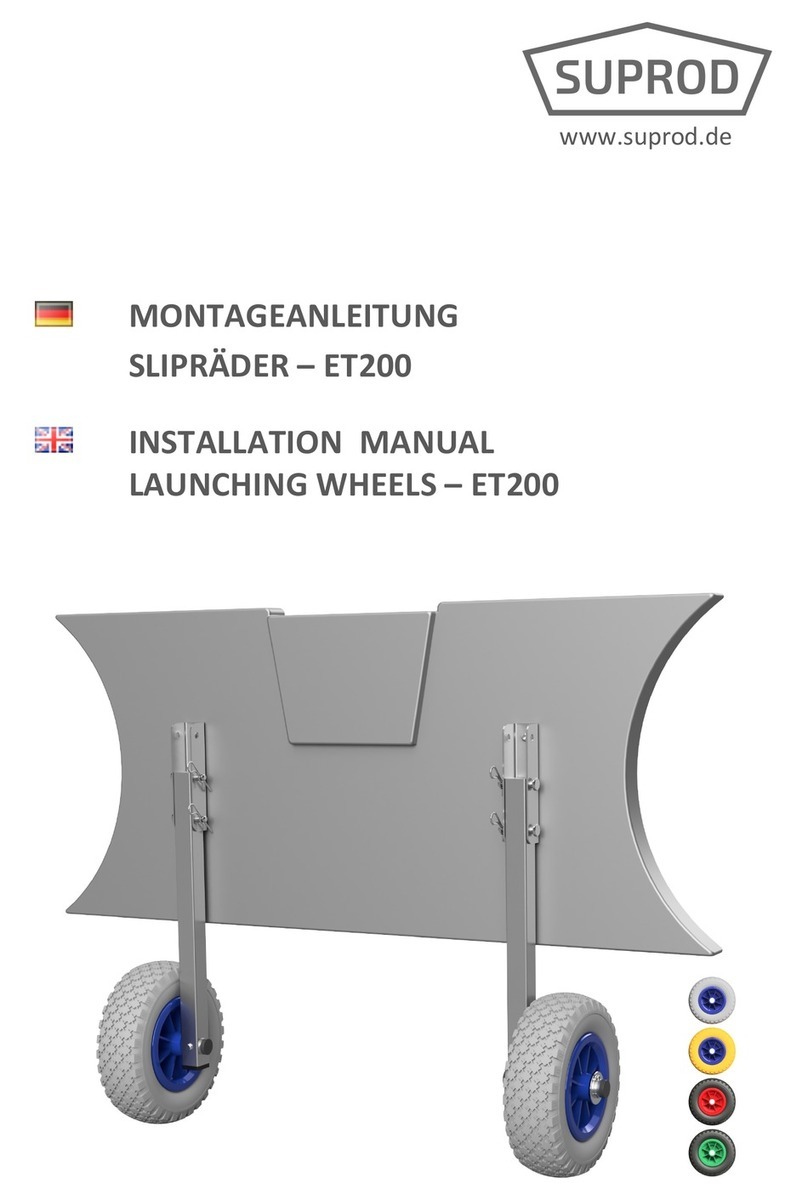Loadrite Elite Series User manual

1213 1200.01
1
LOAD RITE Trailers, Inc.
265 Lincoln Highway
Fairless Hills, PA 19030
215-949-0500
Trailer
Operator’s
Manual
IMPORTANT
INFORMATION
ENCLOSED
Please read immediately!

12213 1200.01 2
Table of Contents
Introduction 2
Reporting Safety Defects 3
General Specifications 4 - 7
Trailer Adjustments 7
Determining Tongue Weight 8 - 9
AB & AC (Aluminum Bunk) Trailer Set-Up 9
Operating Information & Pre-Trip Checklist 10
Troubleshooting Chart 11
Attaching Trailer to Tow Vehicle 12 - 14
Operating Your Trailer Equipped with Disc Brakes 15
Maintaining Your Trailer Equipped with Disc Brakes 16
Disc Brake Maintenance Procedure 17 - 8
Tire Safety Information 19 - 31
Vendor Warranty Contact Information 32
CONGRATULATIONS!
Thank you for your purchase. Your Load Rite trailer is a truly exceptional
piece of equipment and is the finest of its type, incorporating many
features as standard equipment.
Your LOAD RITE trailer is designed and built to give many years of safe
and satisfactory service. In addition to our design efforts, we stand ready
to assist you with any problems or questions you may have regarding the
normal operation and maintenance of your new trailer. Because we are
a leading manufacturer, your dealer has ready access to replacement
parts, technical advice and prompt service.
In order to establish your warranty, the warranty card must be completed
and mailed at the time of purchase, or visit www.loadrite.com and register
online. For your records, fill in the same information on the opposite page.
If you have any questions regarding the completion of your trailer warranty
information, your dealer or LOAD RITE Customer Service will be more than
happy to help you. Your product warranty is not in effect until it is
registered with LOAD RITE'SWarranty Department.

1213 1200.01
3
IMPORTANT - PLEASE READ
Please read this manual thoroughly and
completely. A basic understanding of your
trailer is necessary for satisfactory and
SAFE operation.
We reserve the right to change specifications,
designs, or discontinue models at any time
without notice and/or incurring obligations.
Year Model
Serial # (VIN)
Dealer Purchase Date
Reporting Safety Defects
If you believe that your vehicle has a defect which could cause
a crash or could cause injury or death, you should
immediately inform the National Highway Traffic Safety
Administration (NHTSA) in addition to notifying Load Rite
Trailers, Inc.
If NHTSA receives similar complaints, it may open an
investigation and if it finds that a safety defect exists in a
group of vehicles, it may order a recall and remedy campaign.
However, NHTSA cannot become involved in individual
problems between you, your dealer, or Load Rite Trailers, Inc.
To contact NHTSA. you may either call the Auto Safety
Hotline toll-free at 1-888-327-4236 (TTY: 1-800-424-9153) or
write to: NHTSA, U.S. Department of Transportation, 1200
New Jersey SE, Washington, DC 20590. You can also obtain
other information about motor vehicle safety from the Hotline.

12213 1200.01 4
GENERAL SPECIFICATIONS
LOAD RITE is a registered member of the National Marine Manufacturers Association
(NMMA) and the North American Trailer Manufacturers (NATM) association.
All LOAD RITE trailers are designed and built to meet all US DOT specifications and NMMA
certification.
I. CAPACITY
Imprinted on your trailer certification plate (VIN sticker located on the front left side of your
trailer) is the GVWR capacity. The GVWR represents the combined weight of the trailer
and the load which it was designed to carry. The actual carrying capacity is the GVWR
less the weight of the trailer. Carrying capacity includes the boat, motor, fuel and gear.
If rated capacity is exceeded, the warranty is void.
II. TRAILER COUPLINGS AND BALLS CRITICAL ITEM!
Trailer couplings are permanently marked with the following information:
A. The coupler manufacturer's name or initials.
B. Model or Part Number.
C. Ball diameter, for which rating (GVWR) shall not
exceed the gross trailer weight.
NEVER use a different size ball than indicated on the coupler.
CLASS I COUPLER 2,000# GVWR 1-7/8" Ball, 3/4" Shank
CLASS II COUPLER 3,500# GVWR 2" Ball, 3/4" Shank
CLASS IIICOUPLER 5,000# GVWR 2" Ball, 1" Shank
CLASS IV COUPLER 7,500# GVWR 2-5/16" Ball, 1" Shank
8,000# GVWR 2" Ball (special application, stamped)
10,000# GVWR 2-5/16" Ball, 1-1/4" Shank
13,000# GVWR 2-5/16" Ball, 1-3/8" Shank
To adjust your standard non-brake coupler (Class I, II and III) to your trailer ball, simply
adjust the nut on the bottom of the coupler. Couplers should be adjusted to a snug fit on
the ball so that the 'play' is removed, but not over-tightened as to create wear. Class IV
couplers and hydraulic brake actuators usually need no adjustments, but may require
periodic greasing via the grease fittings where applicable.
Be sure the ball and hitch ratings match or exceed the gross load (GVWR, trailer weight
and capacity) of your loaded trailer.
III. SAFETY CHAINS AND CABLES
(Towing)
Your trailer is equipped with two towing safety chains or cables. When attaching your
trailer to the tow vehicle, connect each of the safety chains or cables to a separate point
on your hitch per the hitch manufacturer’s instructions.
(Bow)
The bow safety chain (or cable) adjacent to the winch is an added safety feature and must
be used by the operator when towing. After sliding the "S" hook through the bow eye of
the boat, adjust the chain as tight as possible by securing it at the key hole slot on the
winch support bracket. (If trailer has cable, it is non-adjustable)
IV. WIRE COLOR CODE AND LIGHTS
The following wire color code function is used:
White –ground
Brown (2) –taillights, sidemarker lights, and clearance lights for each side of the
trailer
Yellow –left turn and stop light
Green –right turn and stop light

1213 1200.01
5
Blue –disc brake free-backing solenoid, to be wired into tow vehicle back up lights
The above wires each correspond with individual circuits on the tow vehicle. Refer to your
dealer, hitch installer, or local automotive repair shop to have the proper vehicle connector
installed.
To avoid trouble with the trailer lighting system, LOAD RITE recommends the following:
A. Make certain the tow vehicle is equipped with a proper harness connection to avoid
overloading circuits.
B. During annual maintenance, remove light lenses (where applicable) and spray metal
components with WD40' or apply a light coating of petroleum jelly.
C. Always carry spare light bulbs for applications featuring replaceable bulbs.
Tail light bulb - #1157
Marker light bulb - #194
3 light rear bar bulb - #L1895
(DOES NOT APPLY TO LED LIGHTS)
V. WINCH
LOAD RITE boat trailers are equipped with a hand winch designed for long life and trouble
free launching and loading. Periodically, the gears of your winch should be lubricated
with an all-purpose grease.
Check the winch cable or strap for cuts or frayed fibers at each use. Replace
immediately if any sign of wear is evident.
Be sure to spool the cable or rope across the drum. To extend cable or rope life, avoid a
criss-cross overlap pattern while retrieving.
VI. SECURING THE CARGO FOR TRAILERING
Tie down the boat securely at the bow and stern with approved tie downs (belly type
straps, ratcheting tie downs, or adequate strength rope).
In addition to the winch cable or strap, use the bow safety chain or cable. Again, do not
depend on the winch line alone to secure the boat to the trailer. Be certain that the
bow is resting snugly against the bow roller(s). Any loose cargo should be secured within
the boat or to the deck of a flat top trailer.
VII. ALL BOLTS, NUTS, AND FASTENERS
Upon initial trailer inspection, and on a continuing regular basis. Check for loose
hardware. Lug nuts should be tightened to 85 - 95 ft. lb..
VIII. BEARINGS AND HUBS
NOTE: Check wheel bearings periodically by the following procedure:
CAUTION - With the trailer connected to the tow vehicle on level ground, set the tow
vehicle parking brake and chock the wheels.
A. Chock the trailer wheel opposite the hub to be removed. Place chocks both in front and
behind the tire.
B. Position the service jack on the frame as near the wheel to be removed as
possible.
C. Rotate the elevated wheel and listen for any noise. If your trailer is equipped with brakes, be
certain that the (drum-style) brake shoes are not dragging. Feel the wheel for any
roughness in its rotation.
D. A quiet and smooth rotation indicates that the bearings are in good shape. If a noise,
grinding sound or roughness in rotation are evident, please contact your dealer for service.
E. At this time the wheel bearing adjustment should be checked. At the factory, LOAD RITE
sets the proper torque to maximize bearing life but on occasion it may be necessary to
make an adjustment due to normal wear. To check if bearing adjustment is needed, grip
the edge of the wheel to see if it rocks, or can move laterally. If the wheel moves at all, an
adjustment is necessary.
First, remove the bearing protector or dust cap (refer to the section on bearing protectors in

12213 1200.01 6
Section F) and the bearing retainer or cotter pin. Always replace the retainer or cotter pin.
DO NOT REUSE! Tighten the spindle nut a little more than "finger tight" (approximately20-
24 inch pounds). When the nut is tensioned properly the wheel should rotate easily and
have no end play. Reassemble in reverse of disassembling using a new retainer or cotter
pin. NOTE: Bearing adjustment should be checked after the first 75 miles of
service and every year after.
F. If needed, grease hubs carefully after launch or before storage. Do not add grease when hub
is cold, too much grease could damage hub seal.
Smaller trailers may be built with a steel dust cap or plastic bearing buddy and can only be
properly lubricated by repacking by hand at the end of each season. Bearing protectors can
also be added as an option.
Larger trailers are equipped with a patented lubrication system which incorporates an
internally cored spindle and grease fitting. This allows the hubs to be easily greased without
disassembly, and assures lubrication to the inner bearing. Using a high temperature NLGI #2
wheel bearing grease and a hand-operated grease gun, apply grease after each immersion of a
warm hub into ambient water. This will displace any water introduced during the rapid cooling
process. Lubricate each wheel periodically or before a long trip with a few pumps.
NOTICE: It is required that once a year each hub be removed and the following items
visually inspected and replaced if necessary: bearings, bearing races, seals and
brake components. Repack with new grease and reassemble using a new cotter
pin.
All work should be performed by a qualified mechanic.
To remove your bearing protector or dust cap, place a piece of wood against the side of it.
Carefully strike the wood with a hammer. Then place the wood on the opposite side, and re-
strike. Continue this procedure until you have "walked" the protector out of the hub.
To reinstall your bearing protector or dust cap, line it up with your hub, place a block of wood
over the front of the protector and carefully tap the wood with a hammer.
NOTE: All bearing protector caps are designed to fit tightly into the hub. Take extra care in
aligning the protector cap with the hub.
IX. TIRES
To determine the proper tire and rim size and capacity specified for your model, refer to your
Vehicle Identification Number certification plate located on the front left side of your trailer.
Recommended tire air pressure can be found on the certification plate and on the tire
sidewall. Always check tire pressures when cold. Always fill to the maximum rated
cold pressure. NEVER over inflate tires.
Should the certification plate be damaged or otherwise illegible, the dealer or manufacturer
can determine the proper tire, rim size, and pressure.
When jacking up the trailer to change tires, follow the same procedure as outlined above
when checking hub bearings.
When replacing tires, use only tires with the ST (Special Trailer) designation.
X. BRAKES AND ACTUATOR
Contact local department of motor vehicle authority to determine brake
requirements for the jurisdiction in which the trailer is to be registered. For safety,
LOAD RITE recommends brakes on ALL axles where available.
The brake system requires DOT 3 hydraulic brake fluid. Check the actuator reservoir
regularly. Braking components should be thoroughly rinsed and dried before storage for
optimal service life. CAUTION: Wet brakes operate less efficiently. Use care in operating
the trailer immediately after immersion while launching or loading.
XI. FINISH
After exposure to saltwater, wash the trailer thoroughly with freshwater at the first
convenient opportunity. After washing, air dry surface with a short ride. Galvanized
trailers may occasionally show a rust spot or surface discoloration. If this occurs, touch up

1213 1200.01
7
with cold galvanizing spray paint. This product can be obtained through any LOAD RITE
dealer, or most paint, hardware, or marine stores. Always thoroughly dry all components,
especially brakes, before storage.
TRAILER ADJUSTMENTS (Adjustable units only)
Most LOAD RITE trailers are designed to be fully adjustable. Available models are
designed to adjust to most any variation in width, hull and bow design. Due to tremendous
variance in boat hull designs and the universal nature of LOAD RITE designs, some
compromises may have to be made to achieve the optimum fit.
LOAD RITE trailers are adjusted to a neutral position at the factory. At the time of
purchase the trailer may require adjustments to assure optimum fit of boat to trailer.
Below is a brief list of possible adjustment options for most adjustable trailers:
I. THE WINCH STAND ASSEMBLY
The winch stand assembly is designed to allow for two basic adjustments. The first is for
height and the second is for hull position.
To adjust the height, loosen the fasteners clamping the winch support to the near vertical
post. Reposition to the desired height and retighten. Proper height is determined when
the winch line is level with the bow eye of the boat. The winch line should attach to
the bow eye after passing beneath the winch roller.
To adjust for boat hull position, loosen the mounting U-bolts and slide the winch stand
along the tongue, either forward or rearward until optimum bow roller to boat hull contact is
achieved.
Hull position relative to the trailer is very important. This position determines where the
boat will sit on the support system. If the winch stand is positioned incorrectly on the
tongue, the rear support system may not be in proper contact with the hull.
II. TONGUE WEIGHT CRITICAL ITEM!
Actual tongue weight can be determined using a simple scale per the diagram on page 8.
On trailers with a movable axle(s), the axle assemblies, spring or torsion, are attached to
the main frame with U-bolts. To adjust the tongue weight loosen these u-bolts and slide
the assemblies forward or backward as required. Moving the assemblies forward will
decrease tongue weight. Moving the axle rearward will increase tongue weight.
Caution: Be sure not to damage the brake line or wire harness in the process.
Caution: Axles should never be moved in excess of 6” in either direction without
written approval from Load Rite.
When complete, be certain the axle is perfectly perpendicular to the direction of forward
travel.
Place a scale on a platform so that the tongue is about the same height as the hitch of the
intended tow vehicle. The tongue and frames must be parallel with level ground when
weighing and towing The recommended tongue weight setting is normally as follows:
For all trailers 2,000 lbs. and under, the tongue weight should equal 7% of the
actual gross weight (GVWR).
For galvanized trailers over 2,000 lbs., the tongue weight should equal 5% to 7% of
the actual gross weight (GVWR).
For aluminum trailers over 2,000 lbs., the tongue weight should equal 5% to 6% of
the actual gross weight (GVWR).
III. ROLLER POSITIONING
Roller trailers offer a great amount of adjustability and can be made to accommodate most
boats.
The cross bars, spanning across the trailer between the main frame rails, offer multiple
height positions on most models. Some models may offer more than one longitudinal
position along the frame. The pivot bars run parallel to the frame members and are
mounted on brackets atop the cross bars. Pivot bars can be adjusted laterally to suit hull
width and chine location requirements. The roller assemblies, mounted at each end of the
pivot bar, offer a range of adjustability, as well (on some of the smaller roller model trailers,

12213 1200.01 8
DETERMINING TONGUE WEIGHT (TW)
NOTE. Gross trailer weight (GTW) is the actual weight of the trailer fully loaded
(including trailer, boat, motor, fuel and accessories). Tongue weight (TW) is
the downward force exerted on the hitch ball at the trailer coupler. In most
cases, this should be 5 to 7 percent of GTW (refer to previous Trailer
Adjustment section).
Tongue weight should be directly measured with a tongue weight scale
(shown). If unavailable, tongue weights of up to 200 Ibs. can be measured on
a household scale by resting the trailer coupler on the scale and placing the
scale on a block so that the coupler is at its normal towing height with trailer
frames level and parallel to level ground. Trailer should be towed with frames
level to parallel ground at all times.
For heavier tongue weights, place a household scale and a brick or block of
wood of equal thickness as the scale upon blocks spaced three feet apart as
shown below. Set a length of pipe on each and rest a beam across the pipes.
Re-zero the scale to correct for the weight of the beam and pipe. Securely
block the trailer wheels. Lower the trailer coupler on the beam as shown, one
(1) foot from the brick or wood block and two (2) feet from the scale.
To obtain the actual tongue weight, multiply the scale reading by three (3). For
greater tongue weights, place the scale and brick or wood block four (4) feet
apart. Lower the coupler on the beam three (3) feet from the scale, then
multiply the scale reading by four (4).
IMPORTANT NOTICE - IMPROPER TONGUE WEIGHT, OR ATRAILER TOWED AT AFRAME
ATTITUDE OTHER THAN LEVEL AND PARALLEL TO LEVEL GROUND, CAN LEAD TO IMPROPER TIRE
WEAR AND UNSAFE TOWING CONDITIONS.
Tongue Weight
Diagram
For determining
tongue weights in
excess of 200 lbs.
with a household
scale
Tongue Scale
Method
For direct
measurement to
1,000 lb.

1213 1200.01
9
the rollers are fixed with no adjustment).
NOTE: It is important to remember that boats with longitudinal strakes or chines should have
the rollers adjusted to run on the flat area of the hull between the strakes or chines.
Also note that the rollers should be lubricated at least once a year, preferably at the start of
the season, and possibly a second or third time depending on the amount of usage and
water immersion. Use a dry graphite lubricant to lube the roller hub.
CAUTION - The boat should be removed from the trailer while ALL adjustments are being
performed. Make certain that all fasteners are properly tightened BEFORE the boat is
reloaded onto the trailer.
AB & AC (Aluminum Bunk) Trailer Set-Up
Step #1- Achieving proper Tongue Weight
IMPORTANT NOTICE- PROPER TONGUE WEIGHT OF 5%-6% OF THE GVWR MUST BE
OBTAINED. SINCE THE AXLES ON THE AB / AC TRAILERS ARE ADJUSTABLE,
THERE ARE TWO METHODS TO INCREASE OR REDUCE TONGUE WEIGHT (see
below) (also see ***note at bottom of this set up sheet). MAKE CERTAIN THE BOAT IS
LOADED THE WAY IT WILL BE TOWED (WITH FUEL AND GEAR ON BOARD)
When checking tongue weight always weigh at the coupler with the trailer in a level attitude
(parallel to the ground).
Method 1) Position the boat on the trailer and move the boat either fore or aft to achieve
proper tongue weight. The boat transom should NEVER overhang the rear bunk supports by
more than 8” without approval of hull manufacturer.
Method 2) Move the axles. If boat positioning (Method 1) will not provide proper tongue
weight, the axles can be re-positioned. Never attempt to move axles with the boat on the
trailer! Always mark the trailer frames before moving axles and fenders so that they are
moved in the exact same amount relative to each other. Re-torque ½” U-Bolts (or carriage
bolts) to 45-50 foot pounds when tightening. (Do NOT over torque).
Caution: Be sure not to damage the brake line or wire harness in the process.
Caution: Axles should never be moved in excess of 6” in either direction without
written approval from Load Rite.
Step #2- Hull set-up
1) Loosen the keel support roller (or target bunk) mounting bolts and lower the support all
the way down. Leave bolts loose at this time.
2) Adjust load bearing bunk centers (left to right) to fit boat properly. These MUST be placed
as wide as possible so that proper “lateral” hull support is guaranteed. Failure to do this
could result in unsafe towing.
Example: Spread bunks wide in order to assure lateral stability. Avoid all strakes on hull.
3) Attach the trailer to the correct size towvehicle with the ball latched and safety chains or
cables properly secured to the receiver. Load the boat onto the trailer. Make certain there is
adequate fender clearance and that the boat is not resting on the satellite /target bunks at this
time.
Note: If the target satellite / target bunks are taking any load at this time, then the main load
bearing bunks must be raised to a higher adjustment position (target apparatus are NOT
designed to support heavy loading at any time).
4) Adjust the winch post location and support head height to match the boat bow eye. Winch
cable or strap should be parallel to the ground and pass below the winch roller.
5) Snug the satellite or target bunks against the keel (maximum load weight = 200 lbs.)
A hydraulic bottle jack can be used. Overloading these supports can result in trailer frame
damage. Tighten all bolts (1/2” straight and U-Bolts to 45 ft. lbs.), and check wheel lugs 85-
95 ft. lbs.
6) Attach winch cable to bow eye and pull boat firmly into bow roller (boat’s bow eye must
always be below the winch roller). Attach bow safety chain and take up chain slack in the
winch support keyhole.
*** Load bearing bunks can be adjusted fore & aft to help in achieving proper tongue weight
(rather than moving axles in most cases).

12213 1200.01 10
OPERATING INFORMATION AND PRE-TRIP CHECKLIST
Always tie the boat securely at the bow and stern. Do not rely solely on the winch
cable/strap to secure your boat.
I. TOWING VEHICLE INFORMATION
Check with your marine dealer to determine the proper towing vehicle capacity for the size
load to be trailered. Most vehicles require a trailer towing package. Refer to your vehicle
manufacturer to determine if your tow vehicle is properly equipped for your intended use.
You may also wish to have a tachometer, vacuum gauge, transmission temperature gauge
and/or an engine oil gauge installed.
II. LAUNCHING YOUR BOAT
Skill and practice will allow proper handling of a boat at the loading ramp.
Stop before reaching the ramp area, without blocking traffic, and remove any tie-downs
securing the boat. Tilt the engine or drive unit up, replace the transom drain plug, etc. It
is recommended that a safety line be attached to the boat so that it can be held in place after
launching. IMPORTANT: Do not disconnect the winch line or bow safety chain until you
are at the water and ready for launch.
Once prepared for launch, slowly back the rig down the ramp to the water. At this point,
secure the tow vehicle on the ramp by placing in park and setting the parking brake.
Check that the safety line is clear and moved to the proper side of the boat for launching
depending on ramp position. Proceed to unfasten the bow safety chain. Securely hold the
winch handle, reverse the winch lock and begin unwinding the line.
Care must be taken at this time to hold the winch handle securely. A free-spinning winch
handle can be very dangerous. If the winch handle begins to free-spin, DO NOT attempt to
stop it by hand.
On an average ramp grade, the boat should gently roll back into the water. If the boat does
not move, unwind 6 to 8 inches of winch line, lock the winch, and give the boat a shove.
Once the boat begins to move, unlock the winch and wind the boat down into the water.
III. LOADING AT THE RAMP
As in launching, prepare for loading before reaching the ramp. Attach the winch line to the
bow eye of the boat and winch the boat onto the trailer. Never allow the winch line to unreel
all the way. Always keep at least 3 turns of the cable around the drum of the winch.
On full roller trailers it is not necessary to have the boat in perfect alignment with the trailer
before loading. Given sufficient time and patience, the boat should self-align as it is being
winched on the trailer. Wind and water conditions can affect alignment. Connect the bow
safety chain as soon as it reaches the bow hook.
Bunk type trailers are designed to load by floating the boat onto the trailer. The trailer should
be submerged so that only the very front of the bunks are visible above water.
Once the boat is completely on the trailer and the bow safety chain is attached, pull the
trailer away from the ramp area, and out of the way of other boat trailers.
Proceed to fully secure the boat to the trailer before exiting the ramp parking lot.
The boat should be tied down at the transom and bow, separately from the winch
cable/strap.
IV. LOADING MISALIGNMENT
Occasionally a boat will load and be misaligned with the trailer centerline. Below is a partial
list of some possible causes:
A. Trailer rollers are not equally spaced from one side of the trailer to the other.
B. Ramp is slanted from one side to the other. Angling trailer into the water will
sometimes help this situation.
C. Boat does not float level in the water in unloaded position.
D. Occasionally, a boat hull is not sitting squarely on the assembly jig as it is bolted to the
deck. This results in a hull with a slight twist through its longitudinal axis. This situation
normally does not affect the performance characteristics of the craft.
Wind, tidal, wake, current, or other environmental conditions could float the hull off trailer
center while loading.

1213 1200.01
11
BRAKE TROUBLESHOOTING
A. Excessive travel in actuator mechanism:
Possible cause: Corrective action:
Low fluid in master cylinder reservoir; air in
hydraulic lines. Refill master cylinder and bleed system.
Leaking primary cup in master cylinder; ports
closed or restricted with dirt; defective hoses;
leaking check valve fails to hold hydraulic
pressure.
Check all components and make
corrections required.
Excessive lining-to-drum clearance. Adjust brakes (drum) or replace linings.
Leaks in hydraulic lines. Replace defective lines.
B. Pressure build-up in hydraulic system:
Possible cause: Corrective action:
Emergency brake cable pulled. Reset emergency brake per
manufacturer’s instructions.
Master cylinder piston fails to stop, keeping
compensating port closed. See Authorized Dealer.
Contaminated fluid causing rubber cups to
swell. Drain, flush and replace fluid, replace cups
and rubber hoses.
Hose cylinder ports closed or restricted with dirt,
or weak return spring. Overhaul or replace.
Back up solenoid stuck or inoperative Repair or replace as necessary.
C. Brake noise
Possible cause: Corrective action:
Worn or cracked drum or rotor machined
beyond allowable oversize limits. Replace drum or rotor.
Vibration with loose bolts, out-of-round drum or
rotor. Tighten hub bolts, recondition or replace
drum or rotor.
Shoe/pad clatter, lining coated with grease. Correct cause of grease leakage, reline
and grind for proper contact.
Vibration with loose bearing adjustment or
rough bearing action. Adjust and lubricate bearings or replace.
D. Brakes lock in reverse
Possible cause: Corrective action:
Inoperative solenoid (disc brake) Check trailer to tow vehicle connection,
check electrical signal. Replace solenoid.
Out of adjustment (drum brake) Adjust linings

1213 1200.01 12
Depending upon
capacity, your trailer is
equipped with a coupler
that accepts either a 2”
or 2-5/16" diameter tow
ball with a centerline
18” to 21” from the
ground. The coupler is
clearly marked for this
requirement. Make
certain your tow vehicle
is properly equipped
and set up.
Once attached, trailer
frame should be parallel
to level ground.
Centerline
Ideal
center-
line
range
PROPERLY ATTACHING YOUR TRAILER
TO THE TOW VEHICLE
Mechanical attachment of your trailer to the tow vehicle
Activate your
Load Rite
Warranty
Visit www.loadrite.com to register
your warranty with Load Rite.

12213 1200.01 13
Once you are certain that your tow vehicle
is equipped with a properly sized, rated,
and positioned ball, raise the trailer on the
tongue jack so that the ball of the tow
vehicle can be maneuvered directly
beneath the ball socket of the actuator.
Remove any safety lock pins from the
actuator lever and move the lever to the
forward position. Crank the handle of the
tongue jack and lower the actuator socket
over the tow vehicle ball. Once you are
certain the actuator is fully seated on the
ball, move the latch to the engaged
position and insert the safety pin through
the actuator slider in the hole located
directly behind the ball socket. Continue to
lower the tongue jack to its fully retracted
position. Rotate the jack to its horizontal
position for travel.
Attach the safety cables from the trailer
to their proper and respective
attachment points on the tow vehicle.
Make certain the quick-link fasteners
are properly positioned and completely
tightened. Attach the safety brake
activation cable from the actuator to
the tow vehicle adjacent to one of the
quick links.
Your trailer should now be properly and
safely mechanically attached to your
tow vehicle. Proceed to electrical
system attachment.
Actuator - Latch Open
Safety
Pin
Latch
Lever
Forward
Actuator - Latch Engaged
Insert Safety
Pin Here
Latch
Lever
Engaged
Quick Link
Attached Emergency
Breakaway
Cable
Attached
Properly Attached Trailer
Safety Pin
Inserted
Latch
Lever
Engaged
Quick Link
Attached

1213 1200.01 14
If your tow vehicle is equipped with a five-wire, four-connector harness, it will be necessary
to retrofit the vehicle with the proper connector. Alternatively, the five-wire four-connector
tow vehicle harness can be used with the six-wire five-connector harness. If the trailer is
equipped with disc brakes, the exposed terminal must be wired to the reverse light circuit
of the tow vehicle for proper brake operation while backing the rig.
Attaching the trailer electrical system to the tow
vehicle
Your trailer is equipped with a six-wire, five-connector wiring harness. The colors
function as follows:
White –ground
Brown (2) –taillights, sidemarker lights, and clearance lights for each side of the
trailer
Yellow –left turn and stop light
Green –right turn and stop light
Blue –disc brake free-backing solenoid, to be wired into tow vehicle back up
lights
The above wires each correspond with individual circuits on the tow vehicle. Refer to
your dealer, hitch installer, or local automotive repair shop to have the proper vehicle
connector installed.
Solenoid
Wire
Solenoid
Pin
Ground
Wire
5 Pin - 6 Wire
Trailer Harness 5 Pin
Trailer to 4 Pin
4 Pin
Vehicle Plug
5 Pin
Trailer Harness
Wire to Tow
Vehicle
Reverse
Light Circuit
Solenoid to Reverse
Circuit Connector
Models equipped with electric or electric over
hydraulic brakes are equipped with a 7-round
plug.

12213 1200.01 15
OPERATING YOUR
TRAILER EQUIPPED
WITH DISC BRAKES
The disc brakes on your trailer function
under the surge principle. As the tow
vehicle brakes are applied, the trailer
pushes, or “surges”, against the tow ball.
This action generates pressure in the
trailer hydraulic system and causes the
brake calipers to squeeze the brake pads
and grip the rotors. While operating the vehicle in reverse,
pressure is applied to the trailer
hydraulic system as the tow ball pushes
back on the actuator. With the solenoid
wire properly attached to the reverse
light circuit on the tow vehicle and the vehicle
gear selector in reverse position, the actuator
free-reverse solenoid is energized. When
energized, the solenoid bleeds all hydraulic line
pressure and fluid flows directly to the actuator
master cylinder reservoir. The wheels then
rotate freely in reverse.
Slide
Solenoid
Wire Fill
Cap Latch
Lever
Safety
Pin
Safety
Brake
Cable Safety Pin
Through Hole
IMPORTANT SAFETY NOTE
Once properly wired, the tow vehicle/trailer rig may be
safely operated on the highway.
In an emergency, the trailer may be jockeyed about the
yard or ramp by any vehicle through utilizing the
tethered lock pin placed in the left side of the actuator
inner slide adjacent to the fixed housing. This hole does
not go through both sides of the slide. This feature is
for emergency trailer movement only, and is not
designed to supplant use of the solenoid system under
roadway operation.
CHECK FLUID LEVEL
Remove the fill cap and
check the brake fluid level at
each use.
Always top off with DOT 3
brake fluid as needed.
Latch
Lever
Engaged
Insert Safety
Pin Here
Actuator - Emergency
Backup Engaged

1213 1200.01 16
WARNING - LOAD RITE RECOMMENDS THAT ALL MAINTENANCE BE PER-
FORMED BY A QUALIFIED MECHANIC.
MAINTAINING YOUR TRAILER EQUIPPED
WITH DISC BRAKES
The disc brakes on your trailer have been engineered for the rigorous duty of a marine
environment. Like any mechanical system, the disc brakes on your trailer require periodic
inspection and preventive maintenance.
LOAD RITE recommends brake system service be performed annually for optimum,
reliable system performance. The end of the season is the ideal time to perform
preventive maintenance on your trailer.
Annual Hub and Disc Brake Maintenance Overview
Bleed hydraulic
system.
Examine rotor surface
for deep grooves.
Resurface as
necessary.
Remove, clean,
inspect, and
lubricate slider
bolts. Clean
bushings.
Inspect pad
thickness and
surface for
irregular wear.
Remove, clean, in-
spect, and repack
bearings. Replace
bearings as needed.
Always replace inner
grease seal and outer
retainer.
REGULAR MAINTENANCE NOTE
Add grease easily at any time by removing the rubber
grommet on the bearing cover and exposing the
standard grease fitting.
To prevent inopportune maintenance problems, LOAD
RITE recommends you grease this way after each water
immersion.

12213 1200.01 17
WARNING - LOAD RITE RECOMMENDS THAT ALL MAINTENANCE BE
PERFORMED BY A QUALIFIED MECHANIC.
DISC BRAKE MAINTENANCE PROCEDURE
Work on only one wheel at a time.
Begin by removing the wheel and visually
inspecting brake pad thickness. This will
help indicate the amount of remaining pad
life. Note that the inner and outer pads at
each wheel are of differing thicknesses
from the factory. Examine the faces of
each rotor for signs of uneven wear. Run
a fingernail across each face. If this test
indicates ridges or other imperfections
exist in the rotor face, you may want to
consider having the rotors resurfaced.
Resurface the rotors in pairs and always
replace the pads when resurfacing the
rotors.
Remove the bolts securing the caliper to the mounting bracket. Inspect the face of the
brake pad in the same way you inspected
the rotor. Replace the pads if there are
any surface irregularities or if the pads
have 3/32” or less material from the
surface to the most shallow rivet. If one
pad needs replacement, always replace
all of the pads on the same axle. Always
resurface the rotors when replacing the
pads.
Secure the caliper to the frame and out of
the way of the rotor with a zip tie or
bungee cord. Do not allow the caliper to
hang from the brake hose!
Remove the outer bearing protector.
Remove the locking mechanism and large
outer nut from the spindle.
IMPORTANT SAFETY NOTE
Never raise a trailer wheel off
the ground for service unless
the trailer is safely attached to
the tow vehicle, and one wheel
on each side of the trailer is
fully chocked.
Mounting
Bolt
Bleeder Screw
Bushing
Mounting
Bolt
Inner Pad Thickness
Bleeder
Screw
Mounting
Bolt

1213 1200.01 18
Carefully remove the rotor (or hub) from
the spindle taking care to prevent the
outer bearing from falling out of the hub
assembly. Remove the outer bearing
and set aside. Invert the hub assembly
so the inner seal is visible. Remove the
inner seal and discard. Replace with a
new seal at reassembly. Remove the
inner bearing and set aside.
Wipe each bearing with a clean cloth.
Be careful to remove all excess and
contaminated lubricant. Wipe the
spindle clean with a clean cloth.
Examine all bearing and spindle
surfaces for discoloration or pitting. If
evidence of either, replace all affected
components. In the case of evidence of
water contamination, replace all
bearings and seals immediately.
Pack each bearing with high-
temperature lithium based NLGI #2
wheel bearing grease. Reassemble in the reverse order of disassembly. Remember to
install a new seal and a new spindle nut locking device.
DISC BRAKES
Reinstall the caliper over the rotor and
secure with the stainless mounting
bolts. Apply blue Loctite to the
threads of the slider bolts. Torque to
20 lb. ft. if coarse threads, 35 - 40 lb.
ft. if fine thread.
Install the wheel. While rotating the
wheel, torque the spindle nut to 20 lb.
ft. Loosen ¼ turn and retighten by
hand until snug. Securely fit the
spindle nut locking device.
Torque the wheel lugs to 80 –95 lb. ft.
Repeat all of the above for each
wheel on your trailer.
IMPORTANT - BLEED YOUR BRAKES
Bleeding the brake hydraulic system at each caliper should be part of
annual trailer maintenance. Brake fluid absorbs moisture and becomes
ineffective at converting hydraulic pressure to braking action. It is possible
for the brakes to become ineffective or even lock during operation if the fluid
is not serviced annually.
SERVICE NOTE
Always replace these items at
each hub service! Retainer
design may vary by model.
Inner Seal
Cotter Pin
Retainer
Outer
Retainer
Inspect inner surface
of bearing race for
pitting, cracking, and
discoloration.
Inspect bearing
rollers for pitting,
cracking, and
discoloration.

1213 1200.01
19
TIRE SAFETY INFORMATION
1.1. Tire Safety Information
This portion of the User’s Manual contains tire safety information as required by 49
CFR 575.6.
Section 2.1 contains “Steps for Determining Correct Load Limit - Trailer”.
Section 2.2 contains “Steps for Determining Correct Load Limit – Tow Vehicle”.
Section 2.3 contains a Glossary of Tire Terminology, including “cold inflation pressure”,
“maximum inflation pressure”, “recommended inflation pressure”, and other non-
technical terms.
Section 2.4 contains information from the NHTSA brochure entitled “Tire Safety –
Everything Rides On It”.
This brochure This brochure, as well as the preceding subsections, describes the
following items;
Tire labeling, including a description and explanation of each marking on the tires,
and information about the DOT Tire Identification Number (TIN).
Recommended tire inflation pressure, including a description and explanation
of:
A. Cold inflation pressure.
B. Vehicle Placard and location on the vehicle.
C. Adverse safety consequences of under inflation (including tire failure).
D. Measuring and adjusting air pressure for proper inflation.
Tire Care, including maintenance and safety practices.
Vehicle load limits, including a description and explanation of the following
items:
A. Locating and understanding the load limit information, total load
capacity, and cargo capacity.
B. Calculating total and cargo capacities with varying seating
configurations including quantitative examples showing / illustrating how
the vehicles cargo and luggage capacity decreases as combined
number and size of occupants’ increases. This item is also discussed in
Section 3.
C. Determining compatibility of tire and vehicle load capabilities.
D. Adverse safety consequences of overloading on handling and stopping
on tires.
1.2. Steps for Determining Correct Load Limit –Trailer
Determining the load limits of a trailer includes more than understanding the load limits
of the tires alone. On all trailers there is a Federal certification/VIN label that is located
on the forward half of the left (road) side of the unit. This certification/VIN label will
indicate the trailer’s Gross Vehicle Weight Rating (GVWR). This is the most weight the
fully loaded trailer can weigh. It will also provide the Gross Axle Weight Rating
(GAWR). This is the most a particular axle can weigh. If there are multiple axles, the
GAWR of each axle will be provided.
If your trailer has a GVWR of 10,000 pounds or less, there is a vehicle placard located
in the same location as the certification label described above. This placard provides
tire and loading information. In addition, this placard will show a statement regarding
maximum cargo capacity. Cargo can be added to the trailer, up to the maximum weight
specified on the placard. The combined weight of the cargo is provided as a single

1213 1200.01 20
number. In any case, remember: the total weight of a fully loaded trailer can not exceed the
stated GVWR.
For trailers with living quarters installed, the weight of water and propane also need to be
considered. The weight of fully filled propane containers is considered part of the weight of the
trailer before it is loaded with cargo, and is not considered part of the disposable cargo load.
Water however, is a disposable cargo weight and is treated as such. If there is a fresh water
storage tank of 100 gallons, this tank when filled would weigh about 800 pounds. If more cargo
is being transported, water can be off-loaded to keep the total amount of cargo added to the
vehicle within the limits of the GVWR so as not to overload the vehicle. Understanding this
flexibility will allow you, the owner, to make choices that fit your travel needs.
Whenloading your cargo, be sure it is distributed evenly to prevent overloading front to back and
side to side. Heavy items should be placed low and as close to the axle positions as reasonable.
Too many items on one side may overload a tire. The best way to knowthe actual weight of the
vehicle is to weigh it at a public scale. Talk to your dealer to discuss the weighing methods
needed to capture the various weights related to the trailer. This would include the weight empty
or unloaded, weights per axle, wheel, hitch or king-pin, and total weight.
Excessive loads and/or underinflation cause tire overloading and, as a result, abnormal tire
flexing occurs. This situation can generate an excessive amount of heat within the tire. Excessive
heat may lead to tire failure. It is the air pressure that enables a tire to support the load, so proper
inflation is critical. The proper air pressure may be found on the certification/VIN label and/or on
the Tire Placard. This value should never exceed the maximum cold inflation pressure stamped
on the tire.
1.2.1. Trailers 10,000 Pounds GVWR or Less
Tire and Loading Information Placard –Figure 1-1
1. Locate the statement, “The weight of cargo should never exceed XXX kg or XXX lbs.,” on
your vehicle’s placard. See figure 1-1.
2. This figure equals the available amount of cargo and luggage load capacity.
3. Determine the combined weight of luggage and cargo being loaded on the vehicle. That
weight may not safely exceed the available cargo and luggage load capacity.
The trailer’s placard refers to the Tire Information Placard attached adjacent to or near the
trailer’s VIN (Certification) label at the left front of the trailer.
1.2.2. Trailers Over 10,000 Pounds GVWR (Note: These trailers are not required to have
a tire information placard on the vehicle)
Determine the empty weight of your trailer by weighing the trailer using a public scale or other
means. This step does not have to be repeated.
Locate the GVWR (Gross Vehicle Weight Rating) of the trailer on your trailer’s VIN
(Certification) label.
This manual suits for next models
1
Table of contents
Popular Boating Equipment manuals by other brands
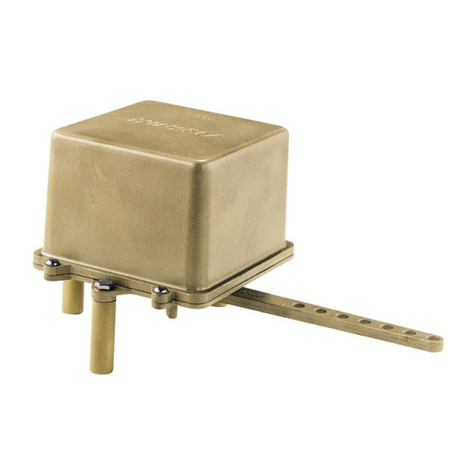
Kobelt
Kobelt 7174 Owner's Operation, Installation & Maintenance Manual
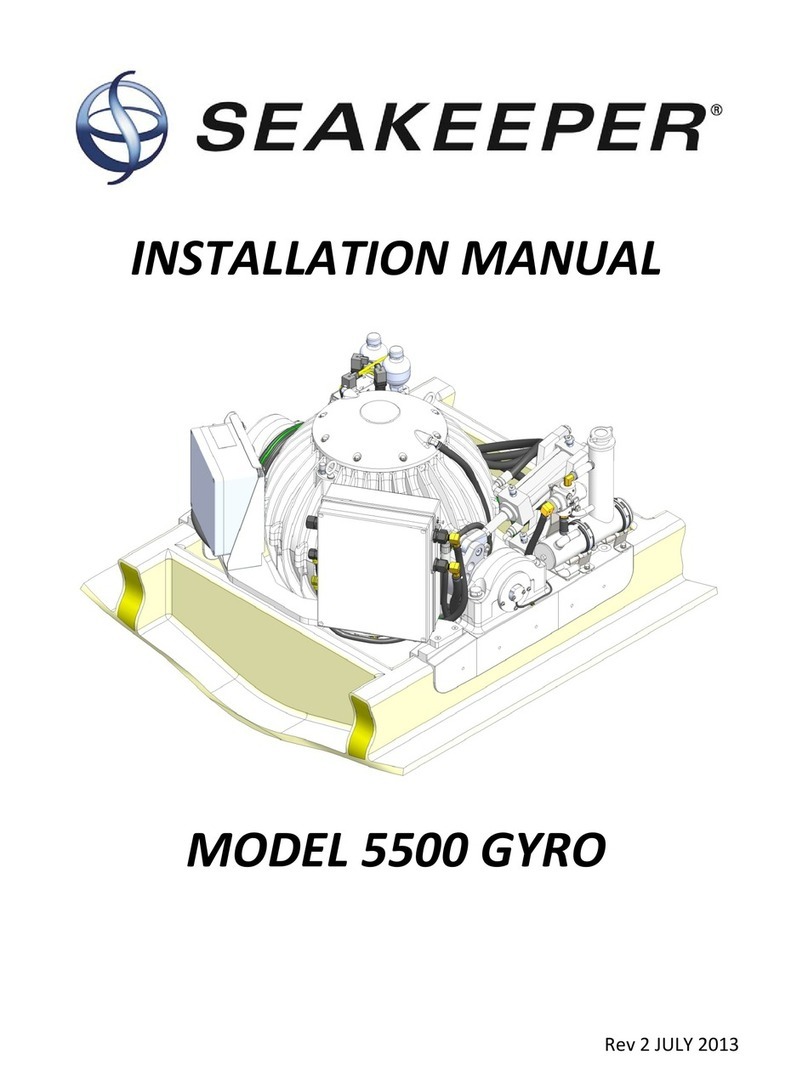
Seakeeper
Seakeeper 5500 GYRO installation manual
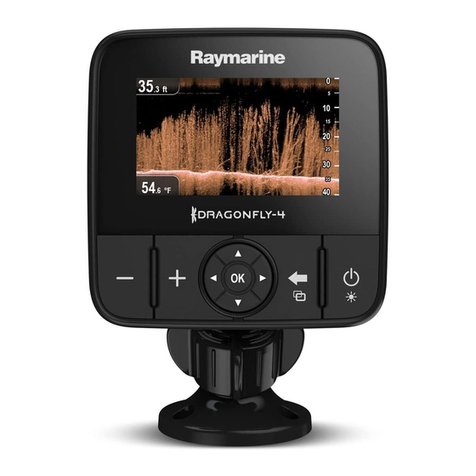
Raymarine
Raymarine Dragonfly-4 DV Installation and operation instructions

Engbo
Engbo XF 30 VR Installation and user manual
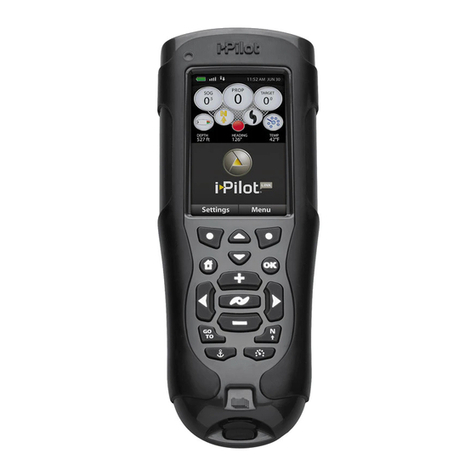
MINN KOTA
MINN KOTA i-Pilot Link Quick reference guide

Floe
Floe 510-27100-00 Assembly instructions and owner's manual

